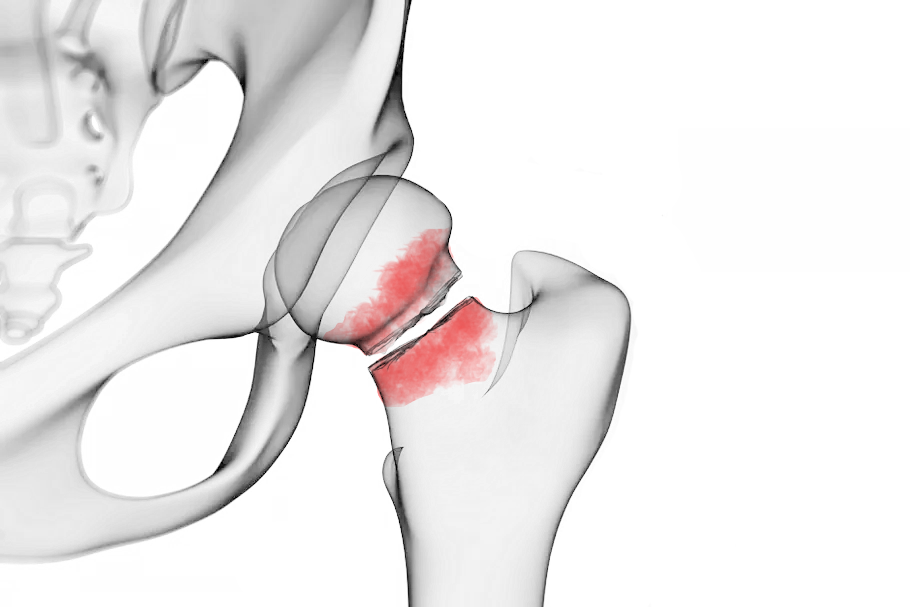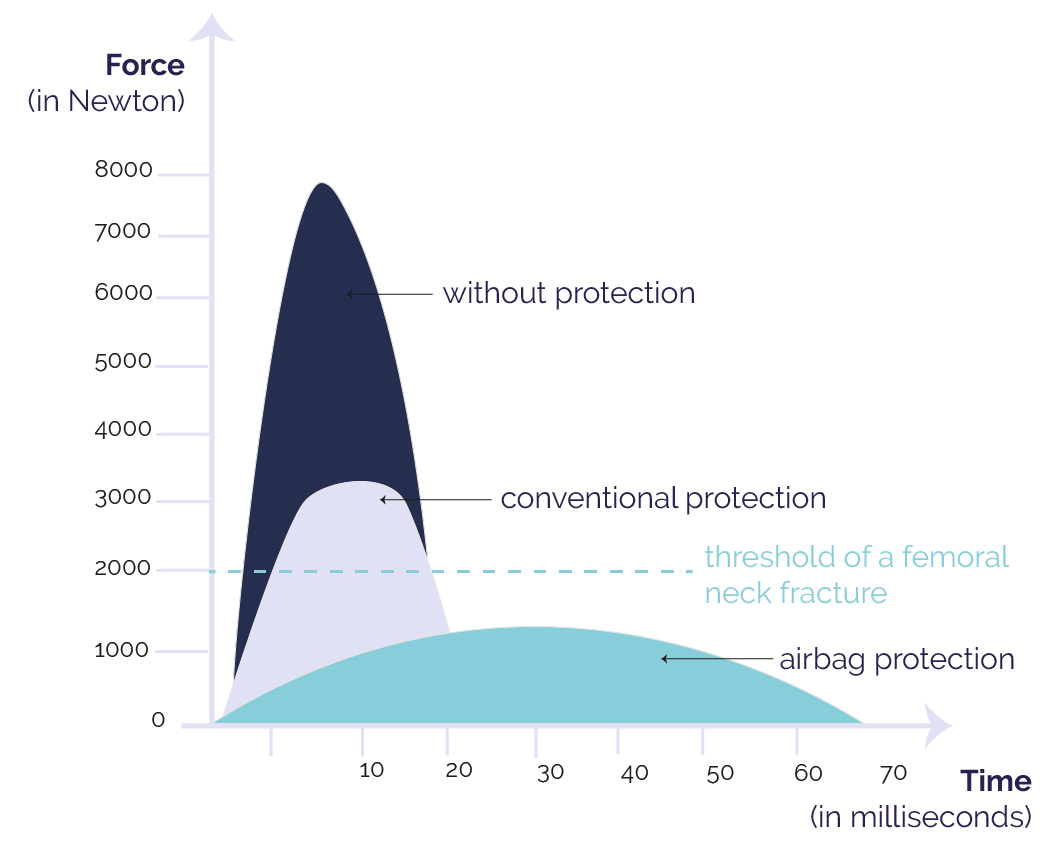The hip fracture
Hip fractures every year in the UK
%
of the elderly die within the year which follows a hip fracture
%
will never recover their previous autonomy
£ are spent the first year for post hip fracture treatment

HIP FRACTURE
Definition: During an impact, as a result of a fall, the upper end of the femur is fractured. Usually the fracture occurs in the femoral neck or trochanter.
Treatment: In most cases, patients who suffer from a hip fracture are operated as soon as possible and the fractured bone is replaced with a prosthesis.
Convalescence: Rehabilitation must be carried out quickly after the operation, for a period of 3 months to 1 year. The patient must regain mobility as soon as possible for a better recovery.
Affected people: The majority of hip fractures concerns the elderly, especially women (75%) because of osteoporosis, which makes their bones more fragile.
Existing solutions are inefficient
A meta-analysis of 11 clinical studies showed that standard protections with
hard or foam shells have an uncertain or non-existent effectiveness.
effectiveness of airbag protection

AIRBAG PROTECTION REDUCES THE FORCE OF IMPACT
Researchers at Virginia Tech compared the reduction in the force of the impact of a fall between airbag hip protectors and conventional hip protectors.
Result:
Only the airbag protections kept the force of the impact BELOW THE RECOGNISED HIP FRACTURE THRESHOLD*, reducing the impact by 85%**.
